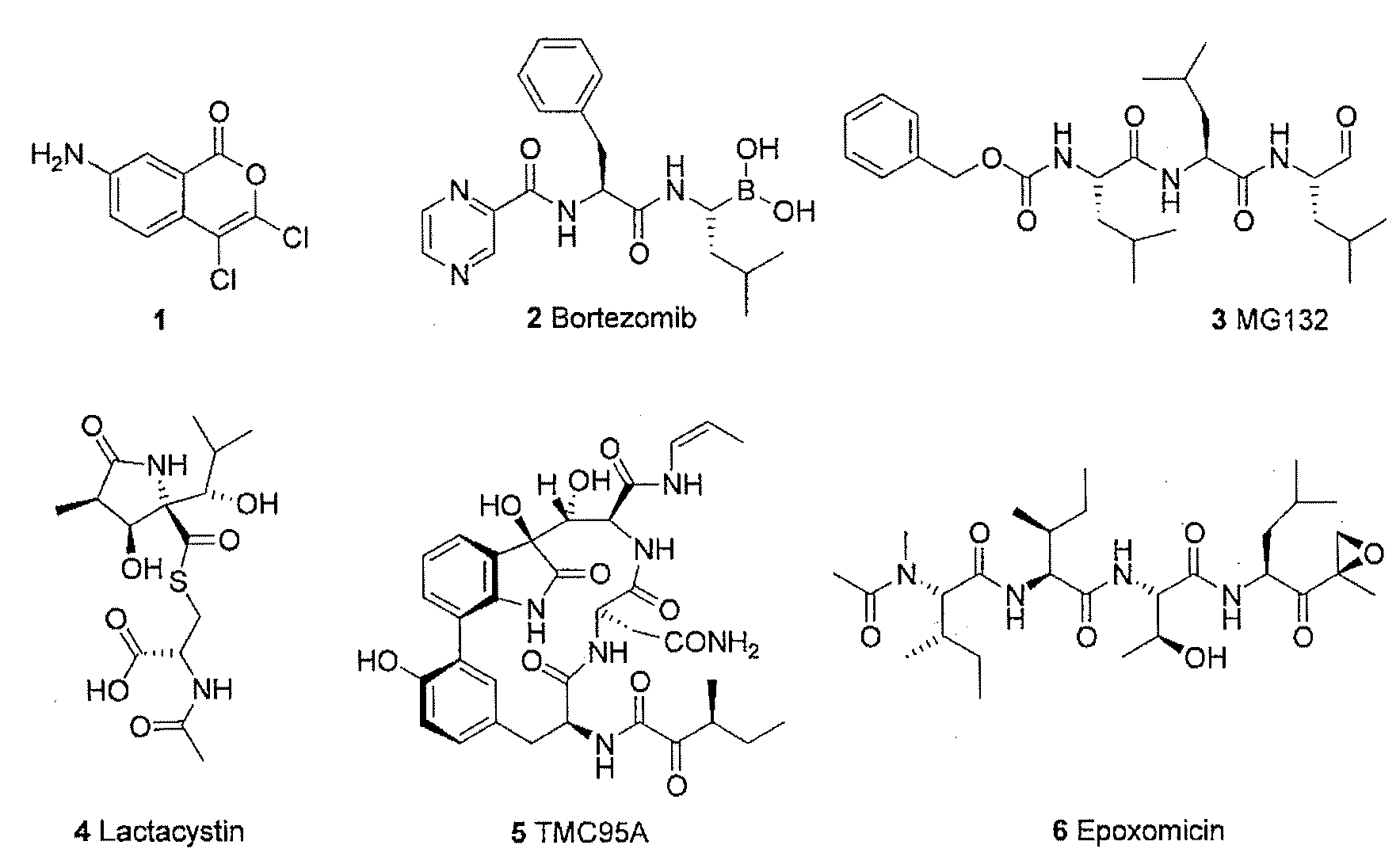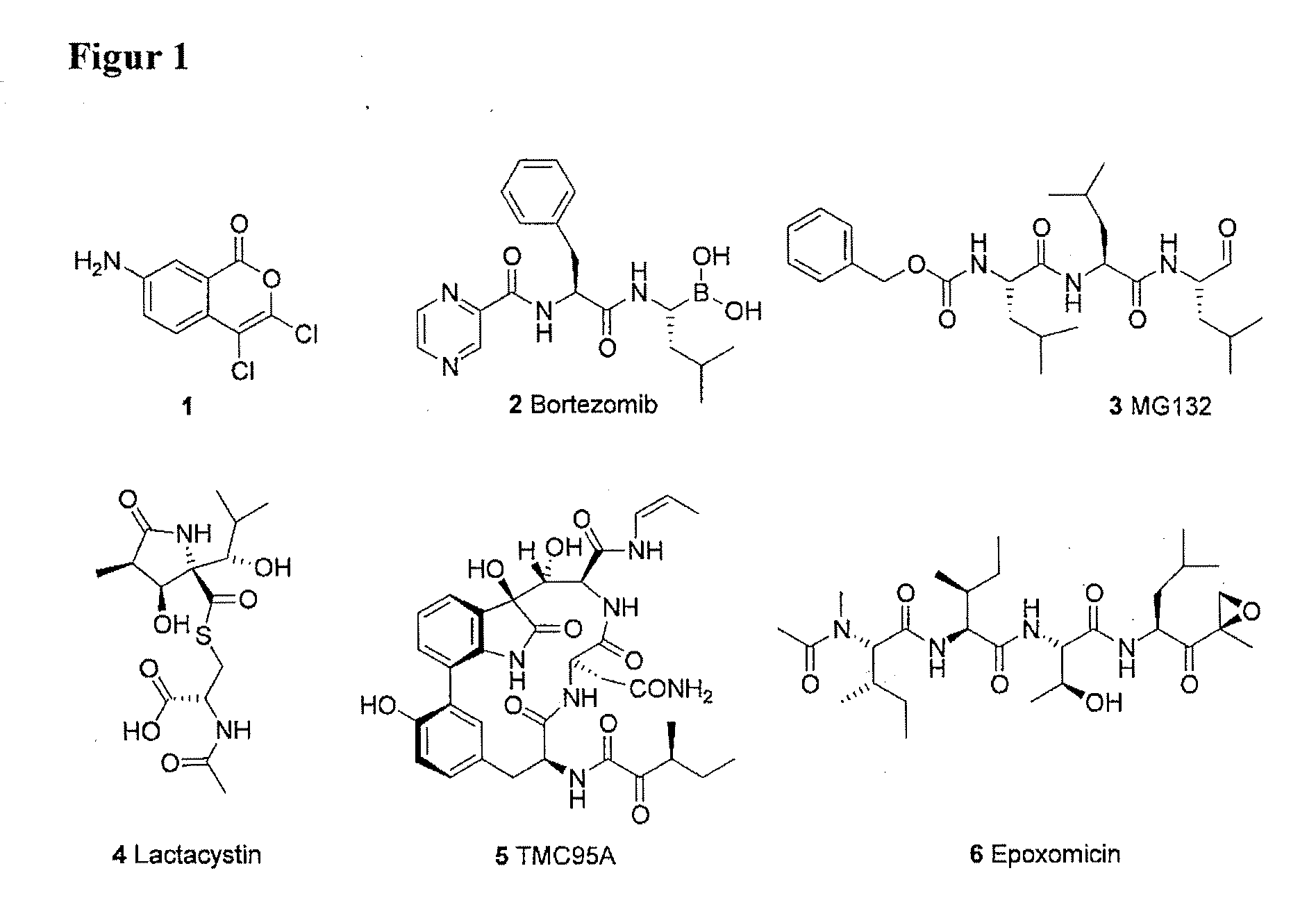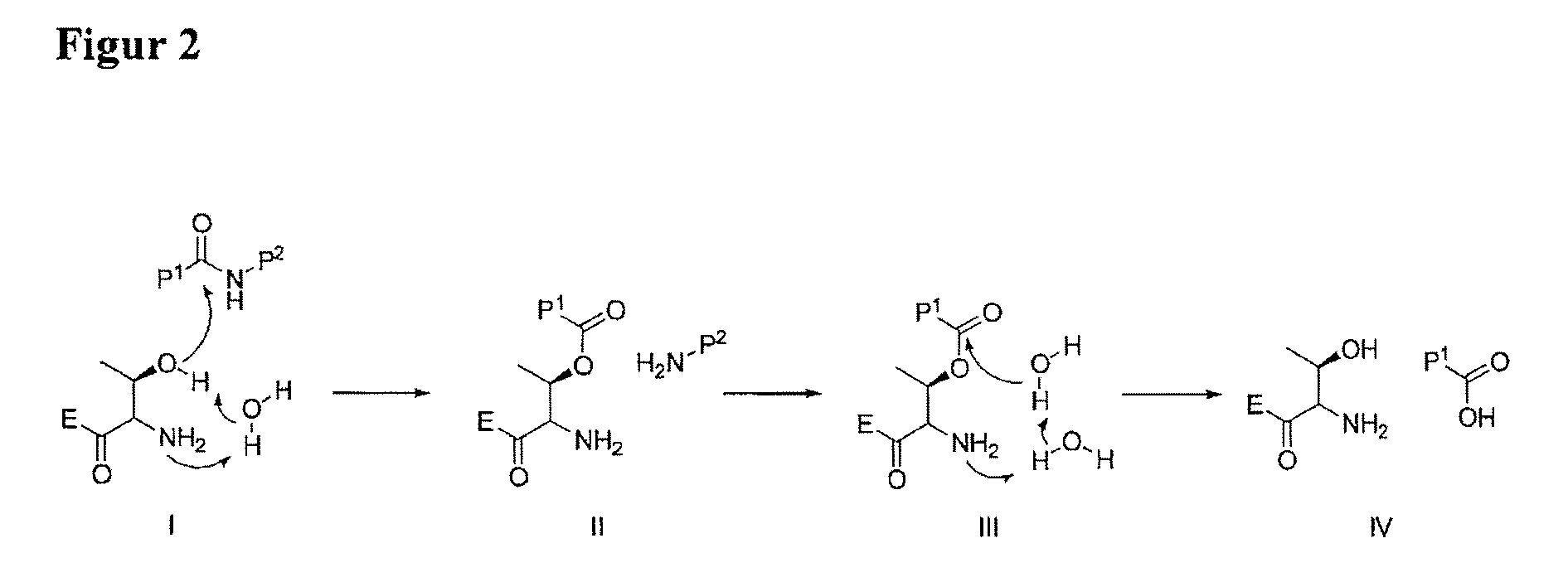Mimetic Peptides and the Use Thereof in the Form of 20S, 26S and Immunoproteasome Inhitibors
a technology of immunoproteasomes and imitation peptides, which is applied in the direction of peptide/protein ingredients, osteogenic factors, drug compositions, etc., can solve the problems of low selectivity in inhibiting proteasomes, series of pathological processes, and inability to synthesis protein and degradation processes
- Summary
- Abstract
- Description
- Claims
- Application Information
AI Technical Summary
Benefits of technology
Problems solved by technology
Method used
Image
Examples
example 1
Synthesis of the Compounds
A) General Matter
[0111]The 1H- and 13C—NMR-spectra were recorded on a Bruker AC 300 spectrometer at 300 MHz (75 MHz). The chemical shifts were given as ppm-value downstream of the field of Me4Si (TMS). Mass spectrometry was performed on a Bruker-Franzen Esquire LC mass spectrometer. Flash-column chromatography was performed using Merck silicagel 60 (40-63 and 15-40 μm) and 60G (5-40 μmn). Thin-layer-chromatography (TLC) was performed using aluminium plates that are coated with silicagel 60 F254 (0.2 mm; E. Merck). The chromatographic spots were visualized through UV and / or spraying with an acidic ethanolic solution of p-anisaldehyde or an ethanolic solution of ninhydrin with subsequent heating. For preparative thin-layer-chromatography, plates coated with silicagel 60 F254 (2.0 mm; E. Merck) were used. Amino acid-derivatives were obtained from Fluka Chemie (Switzerland), NovaBiochem (Switzerland) or Bachem (Switzerland). THF was dried and distilled with sod...
example 2
Isolation of Proteasomes
[0159]Proteasomes were isolated from red blood cells. Cells were lysed with DTT (1 mM), and the stroma-free supernatant was loaded on DEAE-sepharose (Toyopearls). Proteasome was eluted with an NaCl-gradient in TEAD (20 mM TrisCl pH 7.4, 1 mM EDTA, 1 mM azide, 1 mM DTT) of 100 to 300 mM NaCl. Proteasome was concentrated using ammonium sulfate-precipitation (between 40 and 70% saturation) and was separated in a 10-40% sucrose-gradient through centrifugation at 40.000 rpm for 16 hours (SW40; L7, Beckman & Coulter). Finally, the proteasomes were purified on a MonoQ-column and eluted with an NaCl-gradient at about 280 mM NaCl. The fractions containing purified proteasome were dialysed against 50 mM NaCl in TEAD and stored on ice. The purity was determined using SDS-PAGE.
example 3
Protease-Assays
[0160]Suc-LLVY-AMC, Z-VGR-AMC and LLE-AMC (BACHEM, Calbiochem) was used, in order to determine the chymotrypsin-like, trypsin-like or caspase-like (post-acidic)-activities of the proteasome. Substrate was incubated with proteasome at 37° C. in assay-buffer (20 mM Tris / Cl, pH 7.2, 1 mM EDTA, 1 mM DTT) for one hour. 100 ng proteasome was pre-incubated with 0.01-10 μM of the inhibitor for 15 mm. The reaction was started by the addition of substrate (50 μM). The AMC as released was detected using fluorescence emission at 460 nm (excitation at 390 nm) using a TECAN-fluorimeter. The activity was calculated in fluorescence-units. The inhibition is depicted by IC50-values.
PUM
| Property | Measurement | Unit |
|---|---|---|
| pH | aaaaa | aaaaa |
| temperature | aaaaa | aaaaa |
| pH | aaaaa | aaaaa |
Abstract
Description
Claims
Application Information
 Login to View More
Login to View More - R&D Engineer
- R&D Manager
- IP Professional
- Industry Leading Data Capabilities
- Powerful AI technology
- Patent DNA Extraction
Browse by: Latest US Patents, China's latest patents, Technical Efficacy Thesaurus, Application Domain, Technology Topic, Popular Technical Reports.
© 2024 PatSnap. All rights reserved.Legal|Privacy policy|Modern Slavery Act Transparency Statement|Sitemap|About US| Contact US: help@patsnap.com










